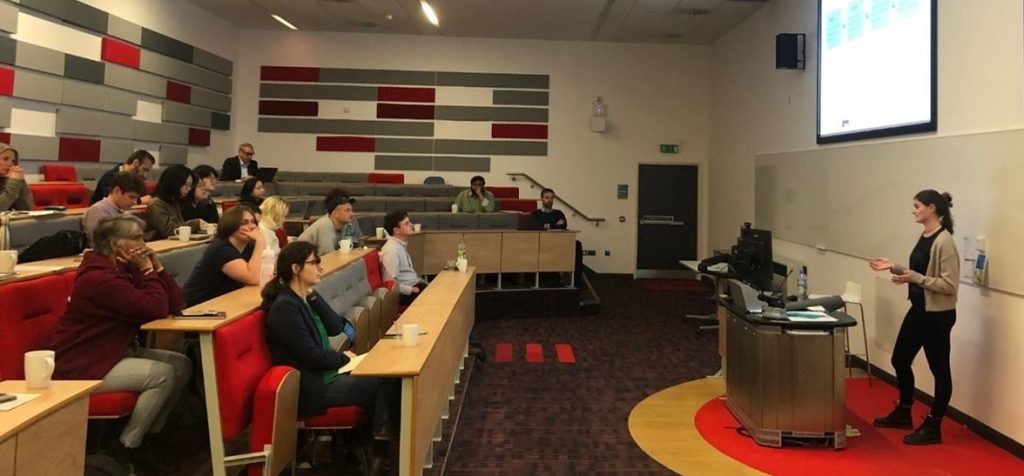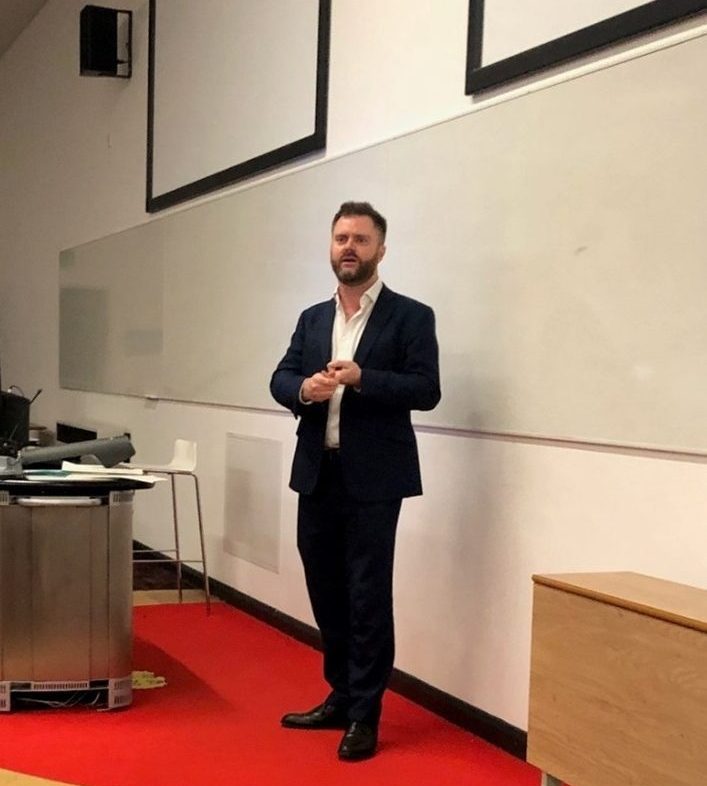A team of ERBE students put on an excellent student-led conference in April 2024, hosted by Loughborough University. The theme, how models can inform policy, both showcased the span of modelling approaches used by ERBE students and challenged us in how we use, critique and communicate the results of our models.
George Dawes and Marlena Swan presented on dynamic thermal building models, in George’s case using co-simulation with a HVAC model. George is investigating flexibility metrics, doing useful work trying to standardise them. Marlena showed using parametric analysis how uncertainty on input parameters can affect what overheating predictions are made.
Hooman Azad and Will Markiewicz work at the intersection of models and data; Hooman using grey box modelling, Will using digital twins. In Hooman’s session it was great to get into detailed discussion about if this method can be applied to very low energy buildings, with very stable temperature profiles and what order of model is best for a given application, and to think how his predictive model could not only anticipate overheating but later be linked to a model-predictive control to then act to mitigate overheating. Will has been experimenting with showing facilities managers data from a complex connected building in order to intervene where it is not performing as expected. But he is also calculating the environmental cost of collecting and storing large amounts of data.

Laurence Childs and Max Eastwood both use steady state physics models alongside lots of data. Max is investigating the problem that something we treat as constant, the Heat transfer Coefficient of a building, is actually not constant, instead varying with outdoor and indoor temperature. This reveals how our models must be constantly questioned and how the concepts embedded within them do not really exist. Laurence was using a simple radiator model and some boiler output data to determine how many homes are suitable for low temperature heating systems with their existing radiators. This was a clever use of data not collected for this purpose, which Bob called “parsimonious” – doing more with less.
Shanti Srinivas introduced moisture modelling into the day, which increases complexity and makes model calibration more difficult to find but which she argued is vital for thermal comfort assessment in hot climates. She is using a dynamic hygrothermal model populated with as much data as possible. Hygrothermal simulations are also useful in multiple UK contexts, including moisture risk analysis in areas with driving rain and in buildings with internal insulation.
Laurel Northmore introduced another method, concept development, which is a sort of shared mental model. She is looking at the concept of “heat pump ready” homes common in policy discourse, what this means practically, whether the concept is helpful or should be framed in a different way.

Our two keynote speakers presented us with some important challenges. Adam Bell, from Stonehaven and previously the UK civil service, told us that models have gravitas in government. This is because our culture is favourably disposed to quantifying things, producing numbers requires models, and our government decision processes rely on cost benefit analysis. However, Dr Erica Thompson from UCL cautioned us that models do not directly tell us what to do. There are so many factors not included in our models – and the factors which are included are loaded with our own perspectives. So when we present our model results, we should acknowledge the limited set of factors included, and advise that the results should be used as a piece of evidence amongst other considerations, to make decisions. I think this is very relevant to ERBE, as often we use models to find a technologically optimum solution, but this may not be e.g. the most resilient solution. Adam Duncan’s poster on scenario modelling (derived from system architecture) described how we can incorporate adaptability and resilience into electricity network planning.
Erica also pointed out that models produced by different research groups tend to be similar to one another, so we need to be careful to incorporate diversity into our models and not use our models’ similarity to falsely make ourselves more confident in our model predictions. This is something that we should reflect on as I think we can fall foul of this in our building models.
One highlight of the day was the excellent questions asked by students of each other and of the keynote presenters. The range of modelling techniques being used by ERBE students combined with their deep understanding of buildings mean they can critique one another’s approaches and provide useful feedback to each other. I am already looking forward to next year’s student-led conference.
